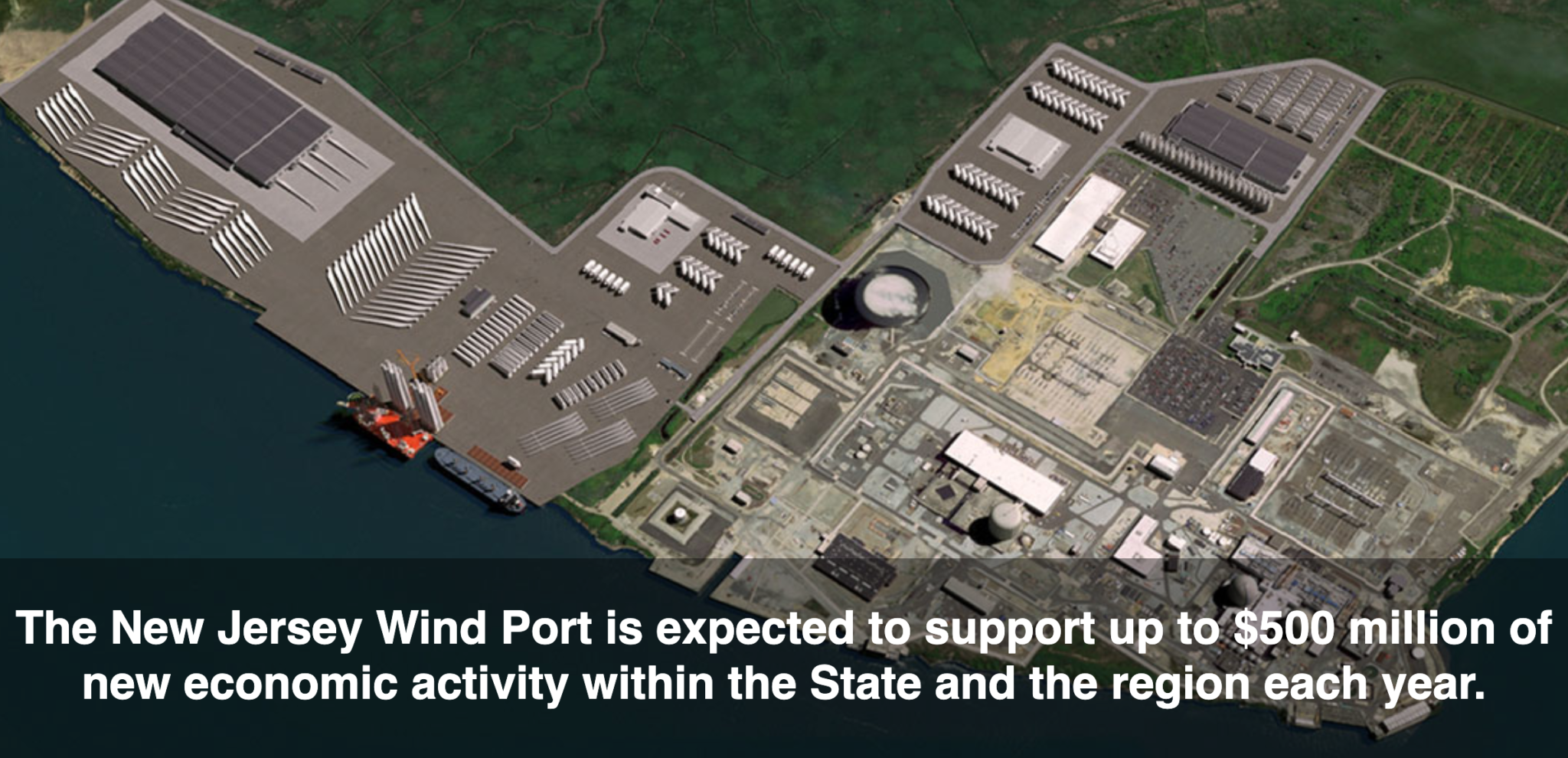Major offshore wind developers and turbine manufacturers have submitted 16 non-binding tenant offers for space at the planned New Jersey Wind Port, a strategic location on upper Delaware Bay that could service projects planned from New England through the Mid-Atlantic region.
The six bidders responded to a Sept. 29 sublease offering from the New Jersey Economic Development Authority for parcels, close by the PSEG Hope Creek nuclear power plant. Four parcels of land at the site include “two parcels of property that are being purpose-built for offshore wind marshalling, staging, and final assembly of turbines; and two parcels that are being purpose-built for offshore wind turbine component manufacturing and assembly,” according to the EDA.
The wind developers are Atlantic Shores Offshore Wind, LLC, planning its array off Long Beach Island, N.J.; Ørsted Wind Power North America LLC, which has a lease and development plan just south off Atlantic City; and Beacon Wind LLC, Equinor’s project 60 mile east of Montauk, N.Y. The developers made offers for Parcels A and B1, planned to be purpose-built for offshore wind marshalling, staging, and final assembly of turbines.
Turbine manufacturers GE Renewables US LLC, Siemens Gamesa Renewable Energy Inc., and Vestas-American Wind Technology, Inc. – together the three largest offshore wind turbine manufacturers in Europe and the United States submitted bids for Parcels C and G, planned to be manufacturing parcels.
The EDA will score the 16 proposals in coming days, after which the authority will begin negotiations with companies.
Those bids could place the New Jersey Wind Port high up in the competition for East Coast bases for the offshore wind industry. The location in Salem County, the far southwest rural corner of New Jersey, has deep water access out Delaware Bay.
Most critically it is down the Delaware River past highway bridges linking New Jersey and Pennsylvania. That absence of vertical height constraints matters as the offshore wind industry moves toward bigger turbines.
Virginia is another top contender, where the lower Chesapeake Bay bridge-tunnel crossings mean massive turbine components and installation vessels will be able to transit freely.
The Virginia and New Jersey state governments are betting heavily that they are in position to become hubs for many of the 17 offshore wind power projects in various stages off planning off the U.S. Atlantic coast.
“The New Jersey Wind Port is a game-changing investment that establishes New Jersey as the capital of offshore wind in the United States,” Gov. Phil Murphy in announcing the tenant offers. “The overwhelming response to this early opportunity to lease space at the Wind Port from the biggest global players in offshore wind shows that we are already well on our way to achieving this vision and driving economic growth that firmly aligns with our environmental goals.”
The wind companies’ interest “shows the significant demand for offshore wind services and supply constraints we face as an industry,” said Liz Burdock, president and CEO of the Business Network for Offshore Wind industry group. “Thanks to the visionary leadership in New Jersey, the Wind Port can serve as a hub for America’s offshore wind industry and a springboard for its growth along U.S. coastlines.
“It is an important part of helping the State of New Jersey reach its clean energy goals as well as create up to 1,500 well-paying local jobs that will infuse the economy with billions of dollars in economic growth. The offshore wind industry needs more than one port, however, and leadership in Washington is needed to unlock funding for new opportunities.”





